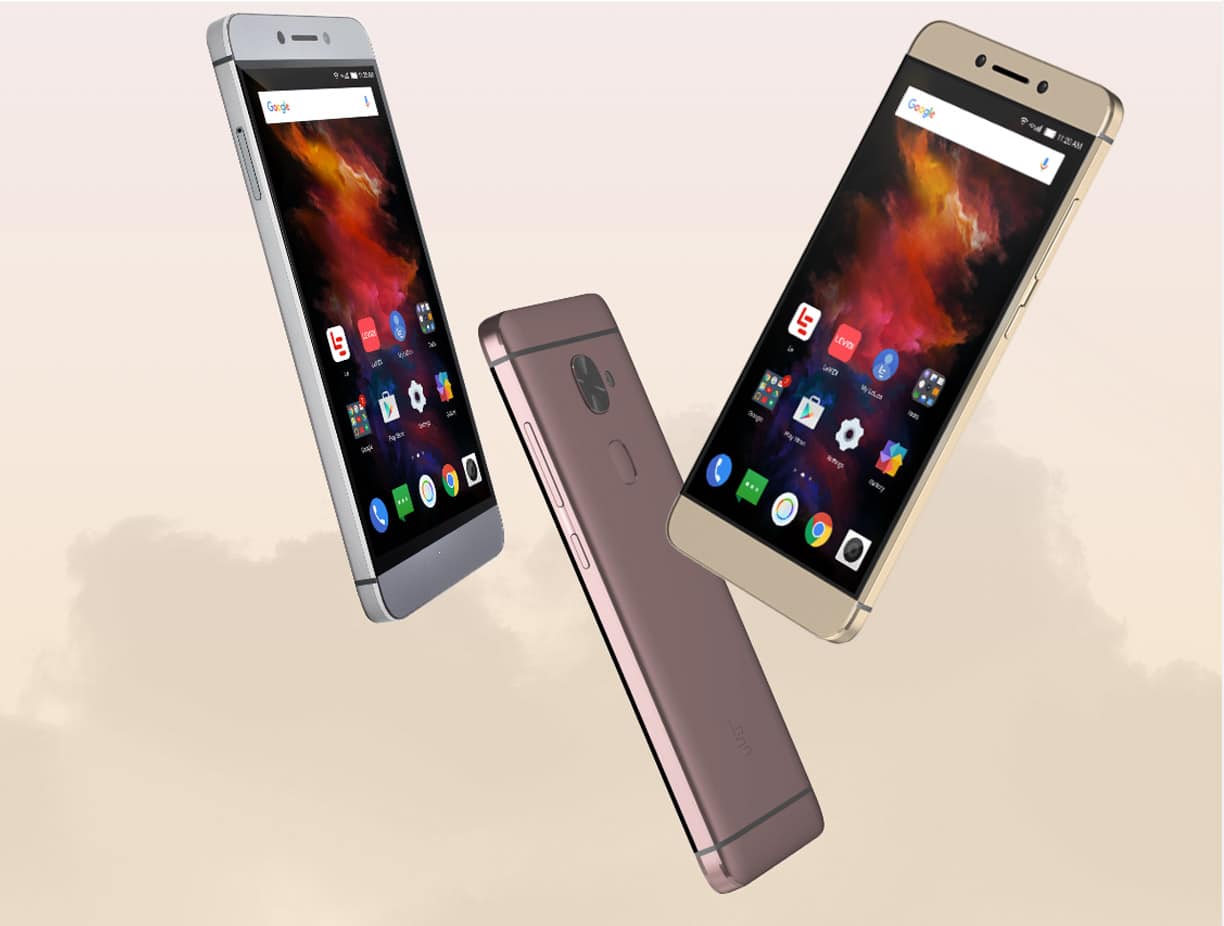News
LeEco’s Le Pro 3 and Le S3 smartphones invade US

After releasing a beast of smartphone in the Le Pro 3 just last month, LeEco is now making its way to the US market, headlined by the aforementioned flagship and the more affordable Le S3.
If you already read up on our initial launch story of the Le Pro 3, note that some things have changed for the US release. There’ll only be one variant available, and it’ll cost $399, which makes it a little more expensive than most of what China is getting.
Here is what’s being offered: a 5.5-inch Full HD 1080p display, Qualcomm’s top-end Snapdragon 821 processor, 4GB of memory with 64GB of storage, a pair of 16-megapixel and 8-megapixel cameras, 4070mAh battery with Quick Charge 3.0, and — surprise, surprise — no 3.5mm headphone jack.
[irp posts=”4692″ name=”LeEco’s flagship Le Pro 3 has beastly specs”]
So yes, it’s nowhere near as impressive as the Chinese variants, but the US model is still groundbreaking when you consider how little penetration China-based brands have had in western countries.
The launch is certainly a step up from whatever Xiaomi has accomplished; the former top-five smartphone manufacturer in the world only managed to release the Android-powered Mi Box 4K set-top box in the US this month, with no handsets in sight.
Huawei has also been working hard on a breakthrough in the west. It’s biggest successes have been the Google-supported Nexus 6P and the recently launched Honor 8, but neither have made a grand enough impact to call the company a force worth reckoning with.
Only OnePlus has made enough headlines to count as a threat, but its strategy focuses on creating high-quality devices at low quantities, resulting in fantastic reviews and negligible revenue.
[irp posts=”3385″ name=”OnePlus 3 unboxing and hands-on”]
LeEco’s other smartphone, the Le S3, is actually totally new, and makes an even stronger case for the brand’s case in the US. It’s quite the bargain for $249, especially once you see what it’s capable of.
It’s equipped with the same 5.5-inch Full HD screen as its counterpart, a midrange Snapdragon 652 chipset, 3GB of RAM with 32GB of storage, the same set of cameras, 3000mAh battery with Quick Charge 3.0, and no dedicated audio port to speak of.
Both handsets come with Android 6.0 Marshmallow skinned with LeEco’s custom EUI design, along with an aluminum body, rear-mounted fingerprint scanner, and USB Type-C 3.5mm adapter, in case you must use your traditional headphones.
There’ll be a flash sale on November 2, and if you’re quick enough, LeEco will shave off $100 from the retail prices of both phones to make them even cheaper. Now that’s a great way to make your presence known in a foreign land.

News
Xiaomi Redmi A3 Philippine pricing, availability
Budget smartphone with high refresh rate display

Xiaomi is bringing high refresh rate displays to its budget line with the announcement of the Redmi A3. The latest addition to the entry-level Redmi line boasts of an expansive 6.71-inch HD+ display with up to a 90Hz refresh rate.
The Redmi A3 is available in Midnight Black, Star Blue, and Forest Green. The smartphone is priced at PhP 3,399 (3GB+64GB) and PhP 3,999 (4GB+128GB) respectively for its two configurations.
Customers may preorder the phone until April 27 via Lazada, Shopee, and TikTok. General sale begins April 26th in all Xiaomi stores nationwide. Freebies are a Basic Piston Earphone for online purchases and a 3-month Viu Premium subscription for in-store purchases.
The Redmi A3’s immersive screen allows users to consume various content in high-definition with better smoothness, a boost for a phone of its price point. The screen has Corning Gorilla Glass 3 protection as well, and DC dimming to reduce blue light exposure.
The phone also sports a refined design that lets go of the iPhone-looking camera arrangement. Instead, the main camera is now in the middle as part of a watch face-looking setup similar to other Android phone offerings.
Speaking of, an 8MP main shooter highlights the back of the Redmi A3. In front is a 5MP front camera. The phone is powered by a MediaTek Helio G36 processor and runs on an Android 14-based OS. Furthermore, it has a 5,000mAh battery with 10W of USB-C charging.
Other handy Redmi A3 features for users to utilize include a 3.5mm jack, Face Unlock, and Fingerprint Unlock.
For the longest time, Google kept Pixel and Android behind two different teams. While the Pixel team dealt with devices made by and for the brand, the Android team ships a product meant for brands outside of the company’s purview. However, the days of separation are at an end. Google is officially merging its Pixel and Android teams together.
In a shocking announcement, the company has confirmed that the teams handling hardware and software will fall under a single team headed by Rick Osterloh. Prior to the merge, Osterloh was the senior vice president of devices and service, which was Google’s hardware branch. He will now oversee both hardware and software.
Because of the new leadership change, Hiroshi Lockheimer, former head of Android, will now move on to other projects within Alphabet. Of note, the change is not harsh for Lockheimer. He and Osterloh had been contemplating on the merge for a while.
Now, why the change? As is the case with everything today, it’s all because of AI. Speaking to The Verge, Osterloh explains that the merge will help with “full-stack innovation.” With how technology is these days, it’s now impossible to develop AI without having a close eye on hardware, such as in Google’s AI developments for the Pixel camera. Merging the teams will help streamline development, especially when hardware is involved.
Despite the change, outside brands, like Qualcomm’s Cristiano Amon, remains confident of Android’s capabilities outside of Google. Just expect more AI coming out in the near future.
Since the Pixel 6 series, Google continues to wow the market as one of the most unique camera designs available in the market today. This year, the brand’s Pixel 9 series might reinvent itself again with a slightly updated redesign.
Between the Pixel 6 and Pixel 8 series, Google introduced a wraparound camera island extending from the left edge to the right edge. While most smartphones today still use the traditional top-left island layout, Google’s lineup consistently grabs admiration from onlookers.
Now, according to an early leak (from Rozetked, via 9to5Google), Google might cut the camera island’s size before it reaches either side of the Pixel 9. The remaining chunk looks like a horizontal pill-shaped camera island right in the middle of the rear panel. It looks like a common camera island comically enlarged and turned on its side. Alternatively, it also looks like a webcam attached to a phone.
Based on the new leak, the new camera island will have three unknown lenses, the usual LED flash, and an unconfirmed sensor. Besides the different camera, the leak also confirms the usual tray of hardware on the side. There’s nothing too revolutionary.
As always, the Pixel 9 series is scheduled to come out in the fall of this year.
SEE ALSO: Pixel 9 series will reportedly come in four models
-

 Features1 week ago
Features1 week agoFortify your home office or business setup with these devices
-

 Events2 weeks ago
Events2 weeks agoStellar Blade: PlayStation taps cosplayers to play Eve for game’s launch
-

 Gaming2 weeks ago
Gaming2 weeks agoThe Rogue Prince of Persia looks like an ultra-colorful roguelite
-

 Accessories2 weeks ago
Accessories2 weeks agoLogitech unveils G Pro X 60 gaming keyboard: Price, details
-

 Gaming2 weeks ago
Gaming2 weeks agoStar Wars Outlaws release date revealed
-

 Reviews1 week ago
Reviews1 week agorealme 12+ 5G review: One month later
-

 Gaming2 weeks ago
Gaming2 weeks agoLenovo confirms development of a Legion Go 2
-

 Deals2 weeks ago
Deals2 weeks agoTCL P635 TV: Big savings for TCL’s anniversary




















